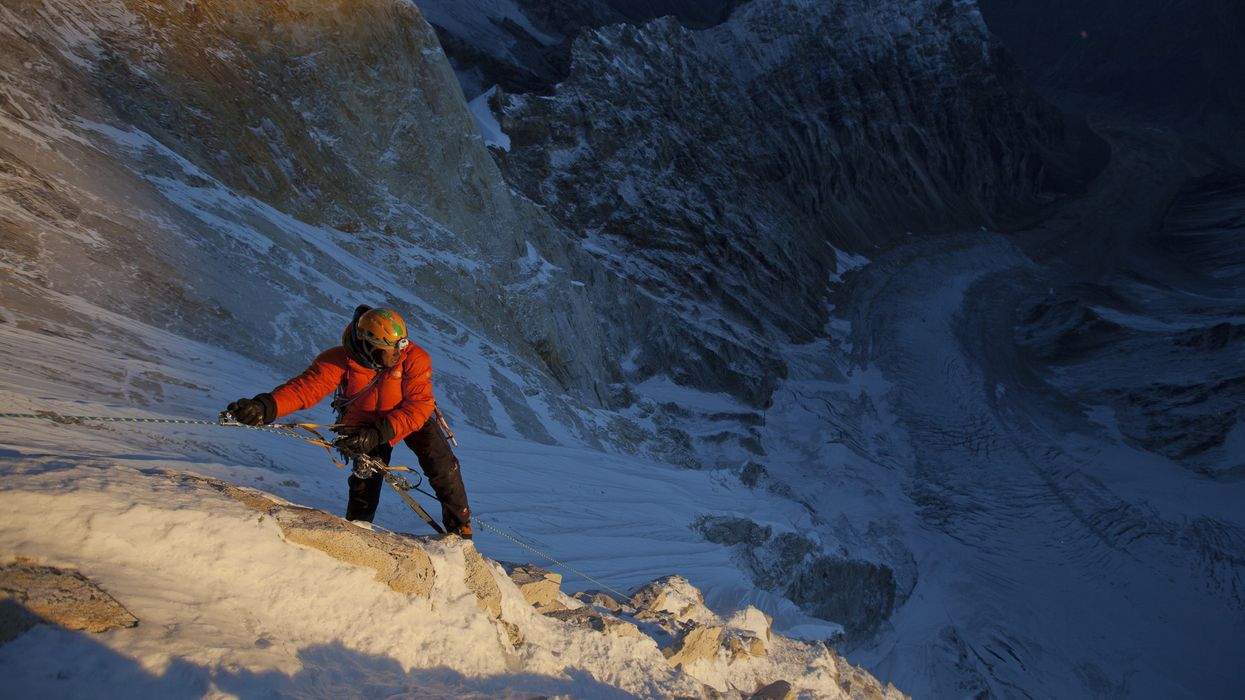Filming in a Foreign Place? Check This Explorer's Guide Before You Go
Shooting in a completely new place can be a very rewarding adventure...if you avoid these major rookie mistakes.

Traveling on assignment for the first time? Have an upcoming adventure planned where you want to get some footage? Either way, lucky you. If you’ve never shot in a foreign location before, there’s lots to think about before you go, and preparation is your key to avoiding rookie mistakes. From an extensive gear breakdown to basic travel videography tips, The Explorer’s Guide to Travel Photography and Destination Video from Michael Maher at Shutterstock is a great place to start.
Here at No Film School, we’ve talked to filmmakers on all kinds of productions, from filmmakers traveling incognito by ambulance in Pakistan to shooting at 21,000 feet up the Shark's Fin route in the Himalayas to honeymooning with a drone. We've learned that understanding and being respectful of the local culture, or hiring someone who does to be your contact on the ground, is often the key to success. Beyond that, here are five of the most important tips we pulled from The Explorer’s Guide that will get you pointed in the right direction for your next filmmaking trip. And if you’re not planning a shoot abroad anytime soon, we've included a few No Film School anecdotes to whet your appetite.
1. Start by packing the right bag
Sounds simple, but this is possibly the most important framework that defines your whole trip. According to the The Explorer’s Guide, your bag should be the right size and suitable for the terrain you're facing. Anyone who has dragged a rolling bag down a dirt road will remember this all too well:
Rolling bags will only be your friend in the airport. Oversized rolling bags and hard-shell cases will keep you gear safe in transport, but when it comes to working on location, portable camera bags are far more practical.
The size of your bag is certainly one of the biggest considerations for a shoot, according to Sean Gillane, who explained in an interview with NFS about shooting in Central America, "You want to be portable, so figure out how much gear you can physically handle moving around before you throw everything in your bags. It does end up being an impossible situation of needing to be prepared for anything but then also needing to be light as possible."

2. Plan for your power situation
We need juice, and you don't want to leave charging batteries up to chance or you may find yourself missing great footage opportunities. Knowing how many Watt hours for each battery you need is the first step in The Explorer's Guide:
You also need to know the Watt hours (Wh) of each battery. Most airlines will allow you to carry on an unlimited (yet reasonable) amount of batteries under 100Wh. For any batteries over 100Wh, passengers are usually limited to two batteries.
Don't always assume that you can find replacement batteries on location. In a NFS interview about shooting the first feature in Lesotho, Andrew Mudge said, "In some parts of Lesotho we couldn’t get so much as an AA battery. In other parts, we used coffin packing Styrofoam for reflector boards."

3. Choose the right gear for the shoot
The Explorer’s Guide offers a substantial list of travel gear suggestions depending on what type of shoot you have in mind. One suggestion is a monopod:
Monopods are the easiest form of stabilization to travel with. They are incredibly compact, and even some of the more rugged ones are still rather lightweight.
And, according to what Sean Gillane told NFS, this time about filming in the West Bank, knowing the vocabulary of your equipment in the language of the place you'll be shooting is also a good thing. Gillane recalled, "Pointing at the bag, one of them asked, 'You have a weapon?' We explained it was a 'monopod,' which was not an English word they were familiar with, and our Hebrew skills were at a complete zero. Playing charades to convince someone you aren't importing weapons into Palestine is not a fun game to play when the receiving party is holding a gun."
4. Storing your footage: smaller may be better
Losing your footage is about the worst feeling a filmmaker can have. Dividing it up could be a safeguard, according to The Explorer's Guide:
While that may seem like an easy solution, it’s actually best to have multiple smaller cards. That way if something happens on location—like dropping your camera into the water—then you will still have all the photos and footage you shot on the other memory cards that didn’t end up taking a dive.

5. Transportation: rental cars vs. taxis
Controlling your transportation is very important, and The Explorer's Guide suggests using a rental vehicle:
When you reach your destination, you should consider your own means of transportation, if that’s an option. A rental car is the best bet, since it allows you to manage your time schedule. If you’re shooting the sunrise, you may have trouble finding a taxi. If you opt for a rental, be sure there is enough room in the trunk or backseat for all of your gear.
As Alexandria Bombach pointed out in a NFS interview about shooting her documentary in Afghanistan, having a local driver may be the best of both worlds. "It was just the two of us in a white Corolla with our fixer and driver the whole time, and so we were really low key," she explained. "A lot of people travel around in convoys and stuff like that, and they see a completely different Afghanistan."
There are lots more travel tips and checklist materials for filmmakers getting into travel photography and videography in the Explorer’s Guide to Travel Photography and Destination Video, which also comes in a free downloadable PDF.
Have you filmed in any unusual locations? What tips would you add?

















